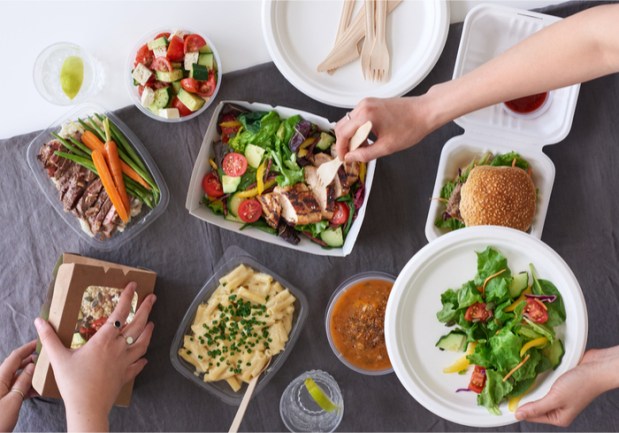How Lockable Pods Are Getting Into The Fast-Casual Restaurant Pickup Game

Restaurant pickup pod company Minnow was born after its co-founder was waiting in a long line at a restaurant for lunch. He noticed that the customers around him were annoyed with the wait, and they were actually leaving the premises: “You had a business with customers [who] weren’t really happy, and you also had lost business because the lines were too long,” Minnow Co-Founder and CEO Steven Sperry told PYMNTS.com in an interview.
At a high level, Sperry noticed that there was a significant increase in takeout orders over the last five or so years. “It’s just a lot easier to order online,” he noted. To meet the demand for pickup orders, some restaurants have turned to a decidedly low-tech solution, installing shelves that they stock with customer orders. And, over the past couple of years, restaurants have had to continually expand these spaces to accommodate more and more orders.
These cabinets, too, are hardly ideal. For starters, a customer might take another person’s order by mistake. There are also, unfortunately, people who know these areas are not well-monitored and might game the system by deliberately taking food that they didn’t order. And those thefts impact the restaurant: “The restaurant has to bear the cost of that,” Sperry said. To prevent orders from falling into the wrong hands, Sperry helped create a more high-tech (and decidedly more secure) solution — pickup pods.
To use Minnow’s pods, customers first place their orders through a restaurant’s website or app. The eatery then, in turn, prepares the food and puts it in. Then a customer receives a notification when the order is ready, to eliminate waiting around for the order — which is how many customers retrieve takeout. The PYMNTS Restaurant Readiness Index found 53.9 percent of quick-service restaurant (QSR) customers still wait in line to pick up their orders.
But with the pods, a customer can use an app to open a locker-like storage device at a restaurant instead. “It’s all done through a wireless locking mechanism that is controlled by a smartphone app,” Sperry said. At the same time, Sperry is aware that some orders might be sensitive to temperature. To that end, the he made his pods insulated in an effort to help keep hot food hot and cold food cold. (He compared the insulation to thermal bags that are used for food delivery.)
The Market For Restaurant Pickup Pods
When it comes to placement, Sperry sees the pods working in fast casual restaurants that have somewhere in the range of 10 to 200 locations. He noted, however, that is his market strategy and doesn’t mean the concept wouldn’t work equally well for a restaurant with a single location or a large national chain. But he did say that it would be easier to approach a decision-maker at an operation in that size range as opposed to those large chains.
With the initial pod concept, his company’s app will be used only for notifications and unlocking the cubby. That is, online ordering will be handled through the restaurant’s existing ordering channel like a website or an app. Sperry did, however, point out that one of the benefits of using the app for the cubbies — as opposed to those used by other companies such as Little Caesars that might have a customer type in a numeric code to pick up an order — is that the app could have built-in value-adds like ordering and pickup functionality. Those features could be beneficial for a smaller restaurant that might not have the budget to purchase ordering solutions in the future.
Sperry’s pods are coming to market at a time when consumers are becoming more familiar with the concept. For starters, Sperry said, shoppers are used to seeing Amazon Lockers and other sorts of pod-based systems in stores. At the same time, he noted, there is a lot of interest in online food delivery platforms as well as grocery pickup. And, of course, the internet of things (IoT) technology is helping to driving change and has arrived at a point where the technology itself is commercially viable for his system.
But Sperry is looking beyond restaurants as use cases for his pods. The company has, for instance, tested the concept in the lobby of a class-A office building. With the system, employees could order their meals and have them delivered to the pod. That setup allows the customer to collect the food order when it is convenient for them rather than when a delivery person arrives, which could provide some flexibility if the customer has a meeting or a phone call at work.
Even so, Sperry is looking to his concept’s inspirational roots when it comes to its application: he still envisions that the pod’s natural use case will be to help customers pick up their orders inside of a restaurant.
